Looking for seasonings that start with A? You've found the most practical guide to A-spices that actually works in everyday cooking. This complete resource covers 10 essential seasonings starting with A - from common allspice to specialty ajwain - with clear usage instructions, substitution tips, and where to buy each one. Skip the scientific jargon and get straight to what matters: how these spices can improve your cooking today.
Table of Contents
- Quick Reference: Top 10 A-Seasonings at a Glance
- Allspice – When You Need That Holiday Baking Flavor
- Anise – Perfect for Baking and Mediterranean Dishes
- Ajwain – The Secret Ingredient in Indian Flatbreads
- Aleppo Pepper – Your New Favorite Finishing Spice
- Amchoor (Amchur) – The Tangy Secret in Indian Street Food
- Asafetida – The "Devil's Dung" That Makes Vegetarian Dishes Shine
- Arrowroot – Better Than Cornstarch for Certain Sauces
- Andean Chili – For When You Want Something Different From Cayenne
- Annatto – The Natural Coloring You've Eaten Without Knowing
- Alum – Keeping Pickles Crisp Since Before Your Grandparents
- Putting A-Seasonings to Work in Your Kitchen
- Practical Questions Answered
Quick Reference: Top 10 A-Seasonings at a Glance
| Seasoning | Flavor Profile | Where to Find | Beginner Tip |
|---|---|---|---|
| Allspice | Warm, sweet, peppery | Most grocery stores (baking aisle) | Start with 1/4 tsp per recipe |
| Anise | Licorice-like, sweet | Asian/Latin markets or baking section | Use in Italian biscotti recipes |
| Ajwain | Thymey, slightly bitter | Indian grocery stores | Toast before using in parathas |
| Aleppo Pepper | Fruity, smoky, medium heat | Specialty spice shops or online | Sprinkle on pizza after baking |
| Amchoor | Tart, citrusy | Indian grocery stores | Substitute for lemon juice in dry dishes |
| Asafetida | Garlicky-oniony (when cooked) | Indian grocery stores | Store in airtight container |
| Arrowroot | Neutral, thickening agent | Health food stores or baking aisle | Mix with cold water before adding to hot liquids |
| Andean Chili | Earthy, spicy, floral | Latin American markets or online | Start with half the amount of cayenne |
| Annatto | Mildly peppery, nutty | Latin American markets | Infuse in oil for vibrant color |
| Alum | Slight bitterness, neutral | Canning supply stores | 1/4 tsp per quart of pickling liquid |
Allspice – When You Need That Holiday Baking Flavor
Allspice is one of the most versatile seasonings starting with A. Despite its name, it's a single spice made from dried berries of the pimento tree. You'll find it in most grocery stores in the baking or spice aisle.
- What it actually tastes like: A blend of cinnamon, nutmeg, and cloves
- How much to use: 1/4-1/2 teaspoon per recipe (too much makes food bitter)
- Best beginner recipes: Apple pie, gingerbread, pumpkin bread
- Where to buy: McCormick allspice is widely available at Walmart, Target, and grocery stores

Anise – Perfect for Baking and Mediterranean Dishes
Anise seeds have that distinctive licorice flavor many people love (or hate). Unlike star anise (which is different), these small seeds pack a powerful flavor punch.
- What it actually tastes like: Sweet, aromatic licorice
- How much to use: 1/2 teaspoon seeds or 1/4 teaspoon ground per recipe
- Best beginner recipes: Italian biscotti, German Springerle cookies, Greek fish dishes
- Where to buy: Look for Frontier Co-op whole anise seeds at Whole Foods or online
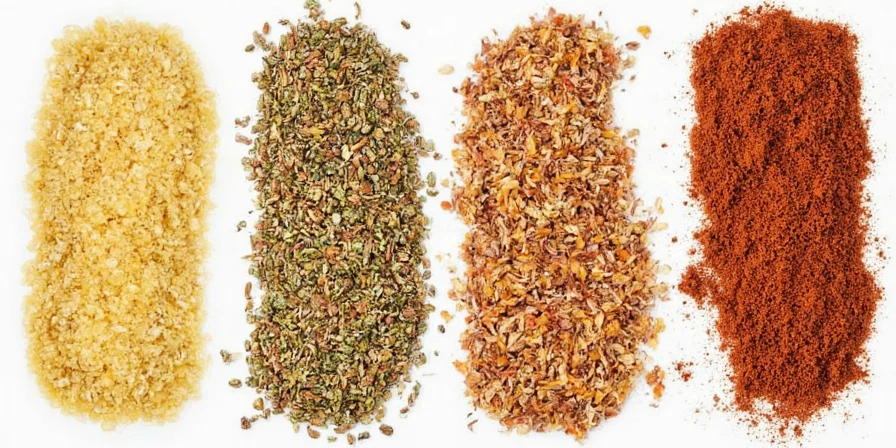
Ajwain – The Secret Ingredient in Indian Flatbreads
Ajwain (also called carom seeds) is essential in Indian cooking but often overlooked by home cooks outside India. It has a distinctive thyme-like flavor that works magic in breads.
- What it actually tastes like: Strong thyme with a slight bitterness
- How much to use: 1/4 teaspoon per cup of flour in bread recipes
- Best beginner recipes: Aloo paratha, naan bread, Indian vegetable fritters
- Where to buy: Patel Brothers or local Indian grocery stores (often sold in small plastic bags)
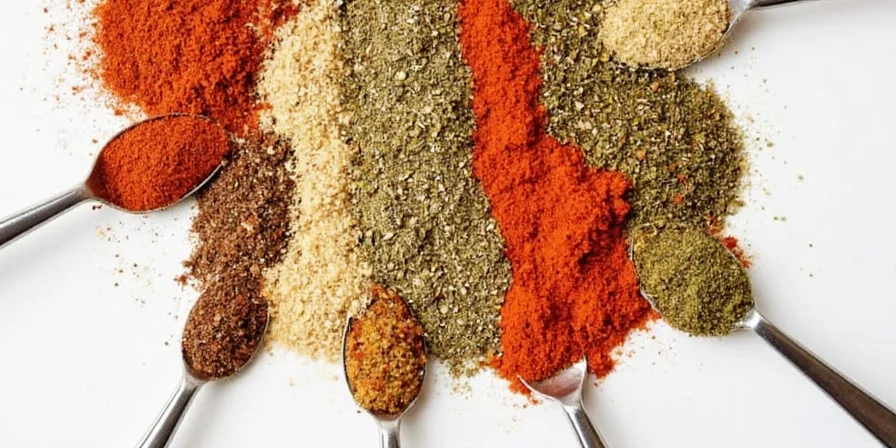
Aleppo Pepper – Your New Favorite Finishing Spice
Aleppo pepper brings moderate heat with a complex fruity flavor that regular red pepper flakes can't match. It's become popular with home cooks looking to upgrade their spice game.
- What it actually tastes like: Mild heat with dried fruit and sun-dried tomato notes
- How much to use: Start with 1/4 teaspoon and adjust to taste
- Best beginner recipes: Hummus, roasted vegetables, grilled chicken, pasta dishes
- Where to buy: Spice hunter Aleppo pepper at Costco or Amazon (look for the red tin)
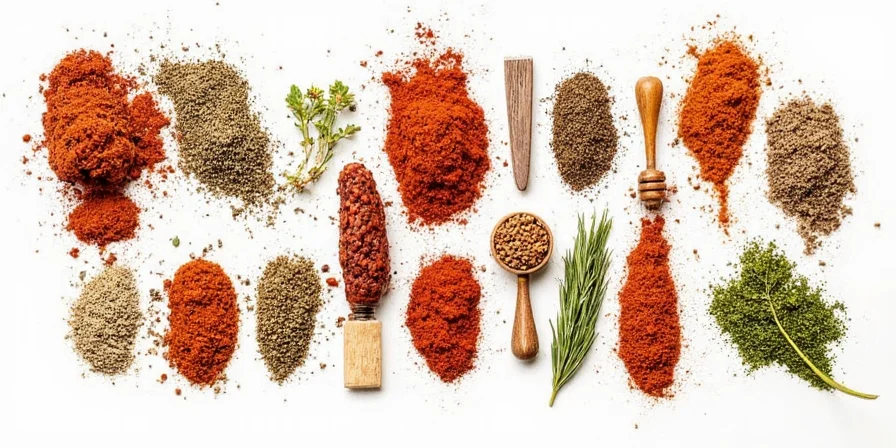
Amchoor (Amchur) – The Tangy Secret in Indian Street Food
Amchoor is dried green mango powder that adds tanginess without liquid - perfect for dishes where you don't want to add moisture.
- What it actually tastes like: Sour like tamarind but less intense
- How much to use: 1 teaspoon per recipe (substitutes for 1 tablespoon lemon juice)
- Best beginner recipes: Potato chaat, samosas, vegetable curries
- Where to buy: Most Indian grocery stores carry Everest or MDH brand amchoor
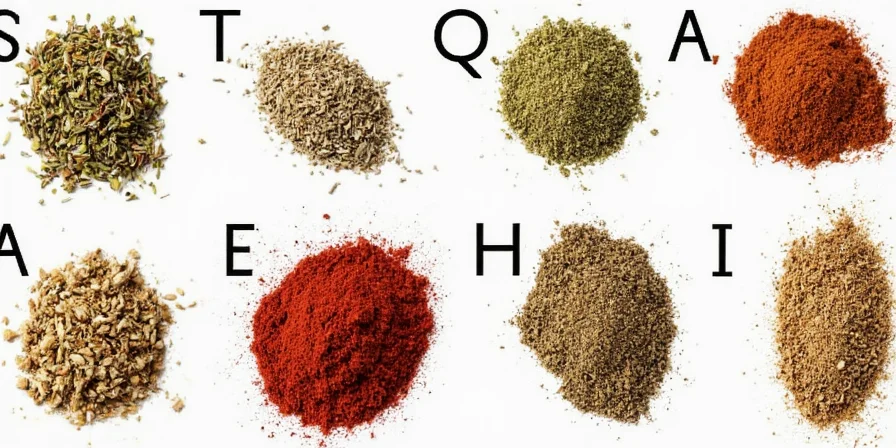
Asafetida – The "Devil's Dung" That Makes Vegetarian Dishes Shine
Asafetida smells terrible in its raw form but transforms when cooked, adding an umami depth that's essential in many Indian vegetarian dishes.
- What it actually tastes like: When cooked: savory onion-garlic flavor
- How much to use: Tiny pinch (1/8 teaspoon) per recipe - it's very potent
- Best beginner recipes: Lentil soup (dal), potato dishes, vegetable stir-fries
- Where to buy: Look for Hing (the Hindi name) at Indian grocery stores - MDH brand is reliable
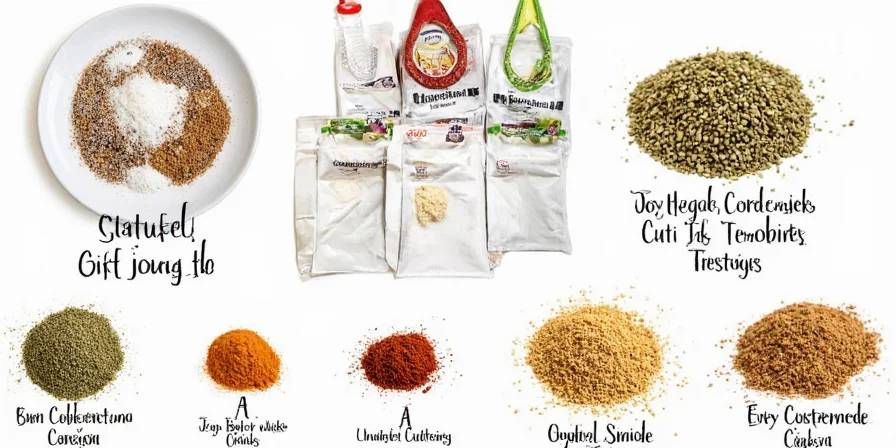
Arrowroot – Better Than Cornstarch for Certain Sauces
Arrowroot is a gluten-free thickener that works better than cornstarch in acidic sauces and when you need a crystal-clear finish.
- How it compares: 2 teaspoons arrowroot = 1 tablespoon cornstarch
- How to use: Mix with cold water first, add near end of cooking
- Best beginner uses: Fruit pies, berry sauces, acidic sauces like tomato or lemon
- Where to buy: Bob's Red Mill arrowroot is available at Whole Foods and most health food stores
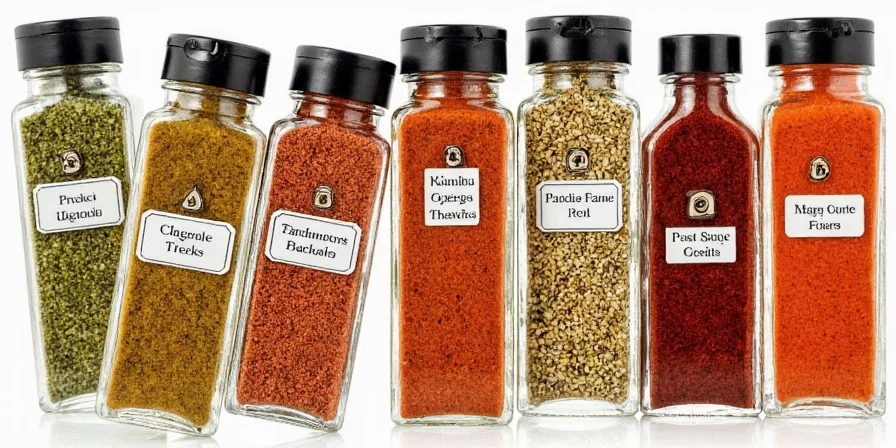
Andean Chili – For When You Want Something Different From Cayenne
Andean chili (also called rocoto or locoto) offers complex heat with floral notes that standard cayenne can't match.
- Heat level: Similar to cayenne but with more flavor complexity
- How much to use: Start with half the amount of cayenne in your recipe
- Best beginner recipes: Peruvian chicken, hot sauces, vegetable stir-fries
- Where to buy: Latin American markets often carry it as "rocoto" or online from specialty chili retailers
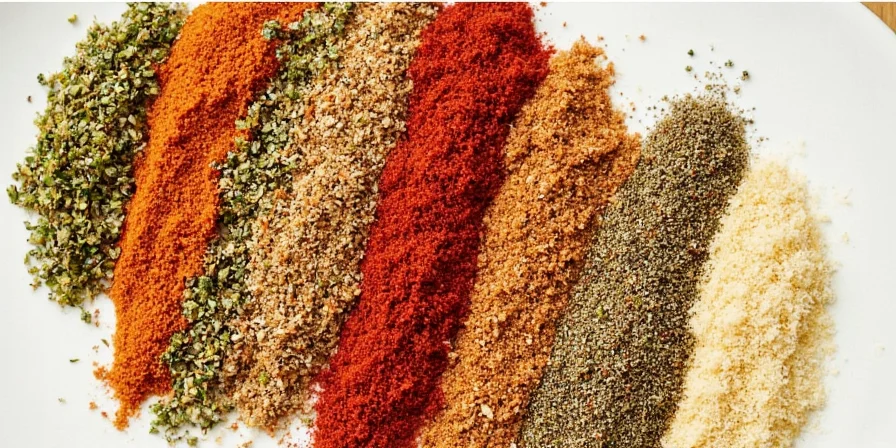
Annatto – The Natural Coloring You've Eaten Without Knowing
Annatto gives foods a vibrant orange color naturally - it's in many cheeses, snacks, and prepared foods you've probably eaten.
- What it actually tastes like: Very mild peppery, mostly adds color
- How to use: Infuse in oil for best results (1/4 cup oil + 1 teaspoon seeds)
- Best beginner uses: Coloring rice dishes, making homemade cheese, adding color to sauces
- Where to buy: Goya annatto seeds at Latin American markets or Walmart
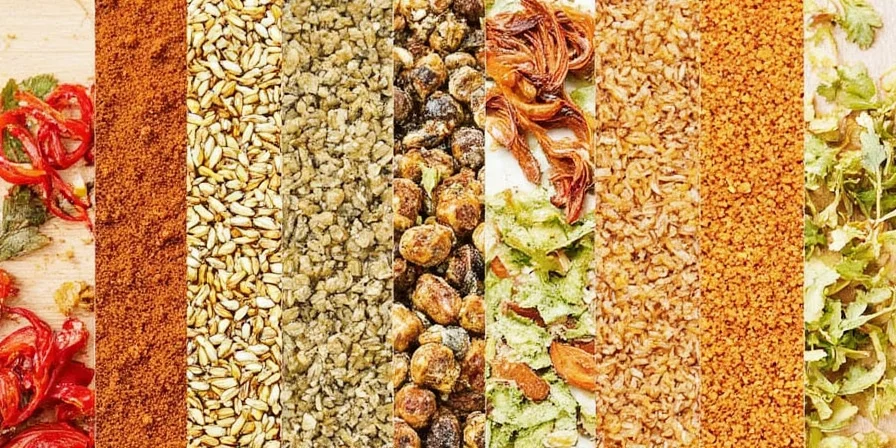
Alum – Keeping Pickles Crisp Since Before Your Grandparents
Alum is a traditional pickling ingredient that keeps vegetables crisp. While less common today, it's still the secret to perfectly crunchy pickles.
- How much to use: 1/4 teaspoon per quart of pickling liquid
- How to use: Add to pickling liquid during processing
- Best beginner recipes: Classic dill pickles, bread and butter pickles
- Where to buy: Ball brand pickling crisp (contains alum) at grocery stores in canning section
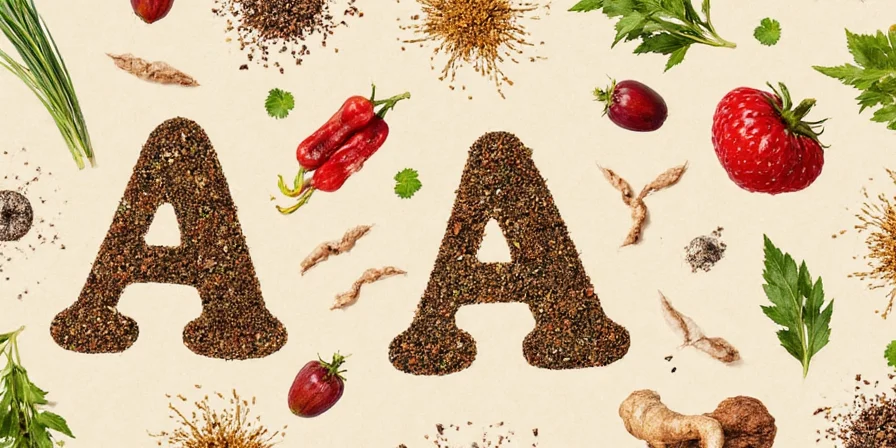
Putting A-Seasonings to Work in Your Kitchen
Now that you know the essential seasonings starting with A, here's how to actually use them:
- Start with just 3 basics: allspice (for baking), Aleppo pepper (for finishing dishes), and asafetida (if you cook Indian food)
- Keep your spices in airtight containers away from heat and light
- Replace ground spices every 6 months, whole spices every year
- Toast whole spices briefly in a dry pan before grinding for maximum flavor
These A-seasonings aren't just alphabetically first - they're foundational to many global cuisines. You don't need to be a professional chef to use them; just start with one new spice each month and build your collection gradually.
Practical Questions Answered
Which A-seasoning should I try first as a beginner?
Allspice is the most versatile starting point. It works in sweet and savory dishes, is widely available, and appears in many common recipes. Just add 1/4 teaspoon to your next batch of chocolate chip cookies or meatloaf for instant flavor upgrade.
Where can I find ajwain if there's no Indian grocery store nearby?
Order online from Amazon (look for MDH brand) or check ethnic sections of larger supermarkets. Some health food stores carry it as "carom seeds." If completely unavailable, a mix of thyme and fennel seeds (3:1 ratio) can work in a pinch for flatbreads.
Is asafetida safe if I'm sensitive to garlic and onions?
Yes, but with caution. Asafetida provides similar flavor compounds without actual garlic/onion. Start with tiny amounts (1/16 teaspoon) and see how your body reacts. Many people with onion/garlic sensitivities tolerate it well when used sparingly in cooked dishes.
How do I know if my arrowroot has gone bad?
Fresh arrowroot should be pure white with no smell. If it turns yellow, develops gray spots, or has any odor, it's gone bad. Properly stored (in airtight container away from light), it lasts 12-18 months. For best results, buy smaller quantities more frequently.











 浙公网安备
33010002000092号
浙公网安备
33010002000092号 浙B2-20120091-4
浙B2-20120091-4